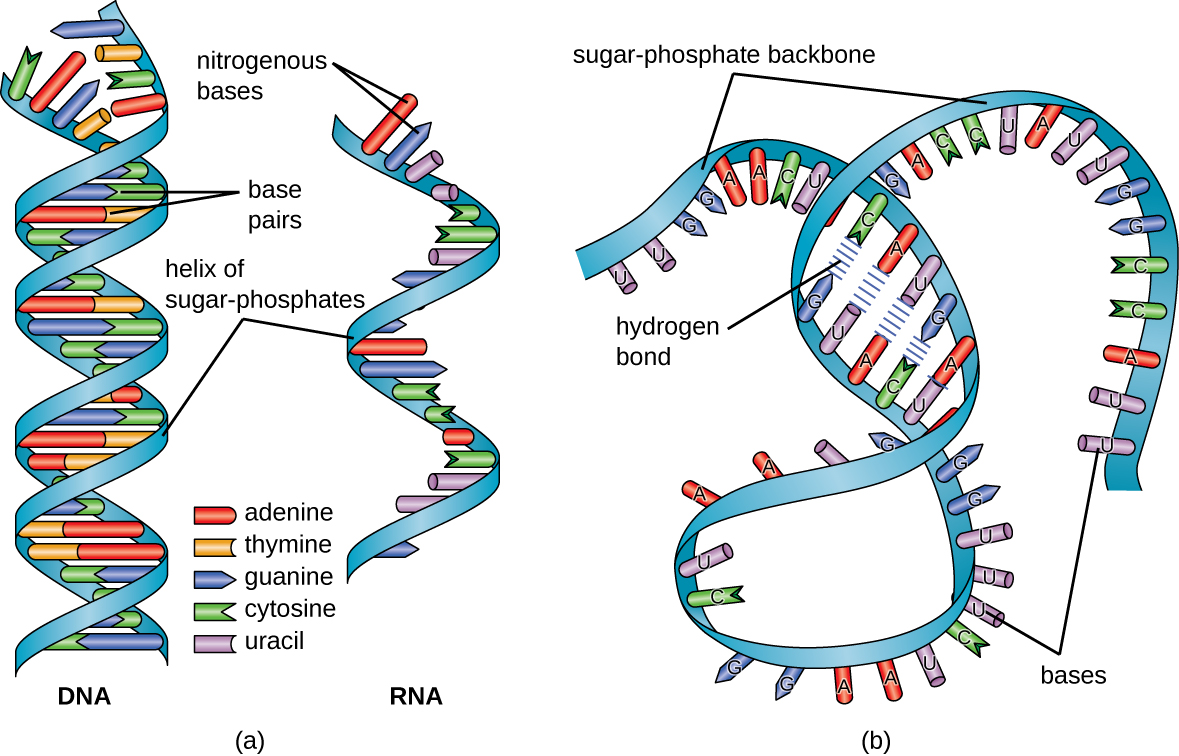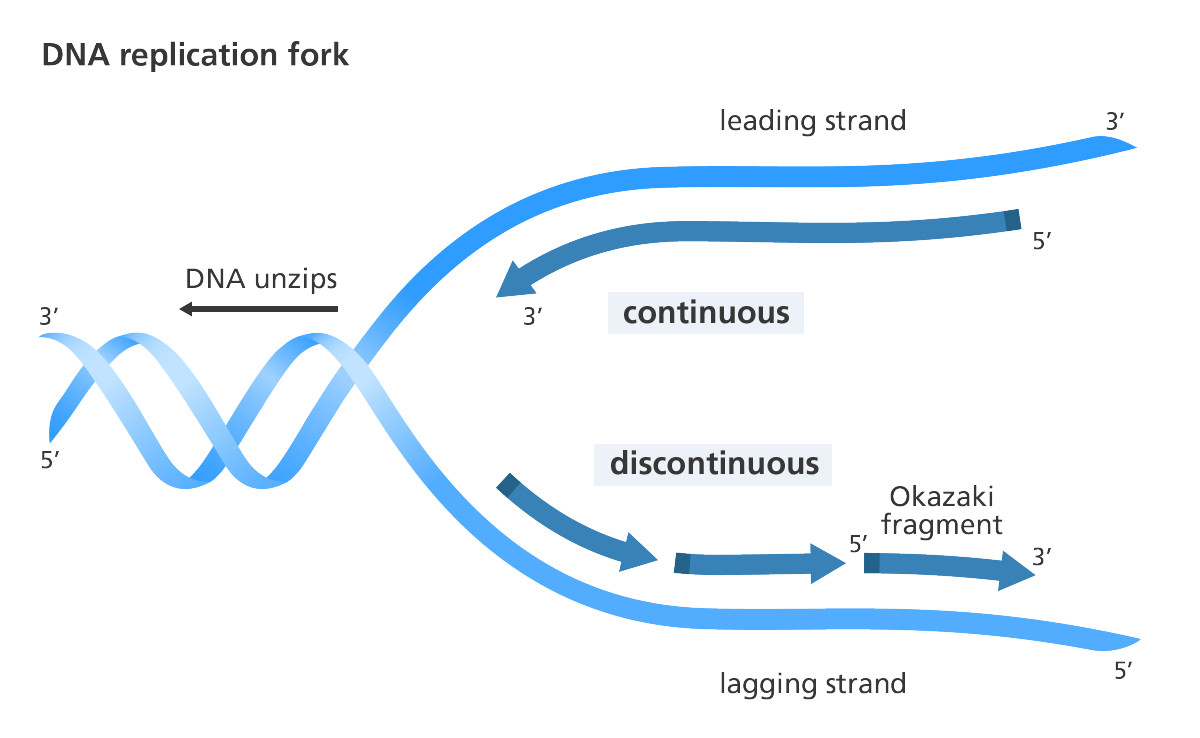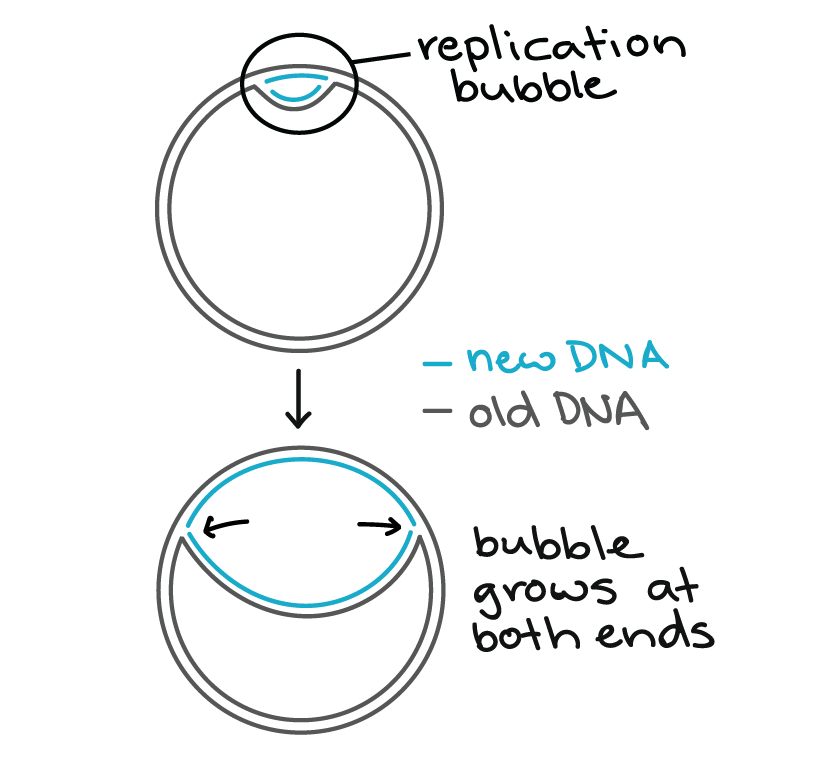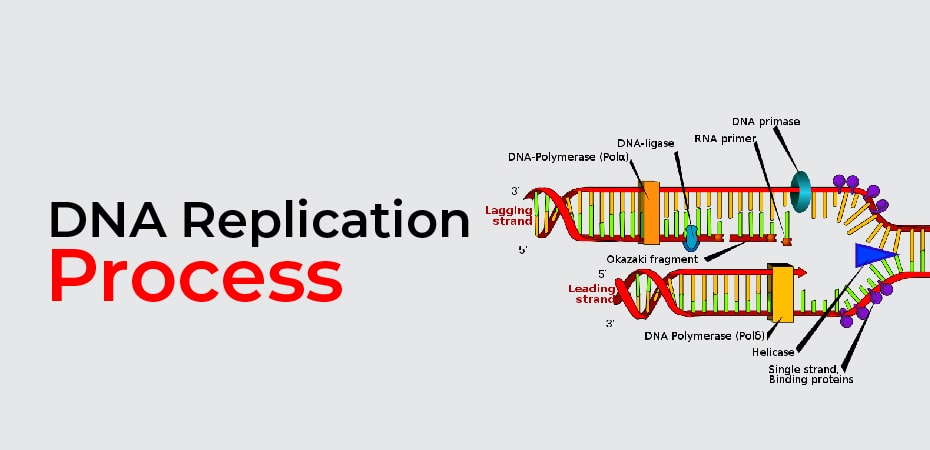Table of Contents
The Introduction of the DNA Replication Process
In all living things, the primary mechanism of replication comprises comparable steps. Because of this, we’ll look at the protein and enzyme replication mechanisms. Keep an eye on how they collaborate to achieve precise and complete DNA replication. Let learn what DNA is about before getting into the replication process.
What is DNA?
DNA (Deoxyribose Nucleic Acid) is a genetic molecule composed of two strands coiled around each other in a double helix configuration.
What’s the composition of DNA?
Each strand has the formation of four chemical bases, which indicates by the letters A, C, G, and T. In their creation, two strands are complementary to one another. The complementary pattern of DNA replication suggests the existence of an A in the opposite strand if a T is present in one strand of DNA. And if there is a C in one strand, there will be a G in another. Each strand has two ends, one at 5′ and one at 3′.

What is DNA Replication?
The act of copying the genetic information encoded in the DNA combination is known as DNA replication. The precise combination of codes requires around 3 billion base pairs of DNA in the human genome. At the same time, replication takes hard effort in any of the trillions of human cell replication activities in the early embryonic stage.
The interesting point in the DNA replication process lies in its quick replication without any significant error like cancer or any other genetic disorder. There are a variety of enzymes and proteins involved in its accurate replication to make the smooth and rapid replication process possible

Formation of DNA Replication steps
DNA both strands have the formation tight twisting together in the opposite directions. The sequence and organization of the DNA strands influence how each strand replicates during the process. Separating the two strands of DNA is the initial stage of replication. Helicase, an enzyme, performs the unzipping, which leads to the development of a replication fork.
Each of the split strands serves as a template for creating a new strand of DNA replication. First, primase, an enzyme, initiate the process. This enzyme makes a primer, which is a small piece of RNA. It is the starting place for the creation of new DNA strands. Next, a DNA polymerase enzyme attaches to the primer and creates a new strand of DNA. DNA polymerase can only add bases from the 5′ end to the 3′ end of a DNA strand.
The Leading strand formation stage
One of the new strands of DNA replication, known as the leading strand, is created continually. The DNA polymerase adds nucleotides in the 5′ to 3′ direction one by one. Because it runs in the other direction, the other strand, the lagging strands, cannot be created in this continuous manner. As a result, the DNA polymerase can only construct this strand in a sequence of little chunks known as Okazaki fragments.
Lagging strand formation stage
An RNA primer precedes each fragment. After then, DNA polymerase adds a short row of DNA bases in the 5′ to 3′ direction. Next, the following primer is applied lower down the lagging strand. Another Okazaki fragment repeats itself after that process.
Exonuclease, an enzyme, removes all RNA primers from both DNA strands once the new DNA has been created. Another DNA polymerase enzyme subsequently fills in the holes in the DNA. Finally, the enzyme DNA ligase joins the pieces of DNA in both strands to produce a continuous double strand. Because each molecule creates one old, conserved strand of DNA and one new one, DNA replication is described as semi-conservative.
Key Enzymes to consider in DNA replication
We all learned already about the semi-conservative process in the replication steps. It allows the double strands of DNA replication of molecule in given layers of helix structure comprising both old and new strands in each layer of DNA strands. In the unzipping process, the hydrogen molecule breaks up and lets it open to the reformation process. Thus, each string of DNA acts as a template for a new complementary strands structure in the molecule’s replication. Thus, replication steps help create identical copies of DNA, each with old and new strand combinations.

DNA Polymerase
DNA polymerase is a critical molecule enzyme in DNA replication. It is in charge of DNA synthesis. The complementary structure of DNA in the replication process comprises adding nucleotides to a developing strand of DNA
Some of the distinct features of DNA Polymerase are that they need a template to form a DNA strand structure. Another important aspect is the nucleotide addition to the 3′ end of the DNA strand in its replication step. Next is the need for a primer as they can’t initiate the DNA chain structure from scratch. But they need a fragment of an existing strand or a shorter stretch of nucleotides in its reformation process. Finally, they check the copied DNA and proofread it by removing the accidental arrangement of nucleotides in DNA replication rearrangements.
Nucleotide addition in the replication process
The Nucleotide Addition process takes up energy. It comes from three phosphates attached as the inner produced energy of ATP molecules. When the phosphate bonds break up, it utilizes the released energy to form another nucleotide bond in the reformation and its replication step. Thus, it helps in growing the nucleotide chain of DNA.
The underlying question in commencing the DNA repetition process is how DNA polymerase and other duplication components determine the starting point. It always originates at a particular spot known as the origin of replication. Its origin further supports it.
Bubble Replication
The specialized protein recognizes the origin and binds to this site, opening up the DNA. As the DNA opens up, two strands of Y-shaped replication fork start their formation and make up the replication bubble. This replication fork will then initiate its replication process in opposite directions.

Helicase in DNA replication
Another intriguing stage is to initiate DNA duplication. A DNA Helicase is a replication enzyme that initiates the reproduction process at the beginning. It is in charge of progressing the replication fork by unzipping the DNA and disrupting the hydrogen bonds between the nitrogenous DNA bases.
Near the replication fork, single-stranded binding proteins wrap the split DNA strands. It prevents them from recombining into a double helix shape.
Primer and Primase in DNA replication
The only responsibility assigned to DNA polymerase during duplication is to add nucleotides to the 3′ end of the current DNA strand. It considers free-OH groups as polymerization hooks present at the 3′ end of nucleotides to this group. The mystery is how its DNA strands add new nucleotides at a new fork in the repetition process. The Primase enzyme aids the process. It creates a short complementary stretch of nucleotides that add together to form the template. It typically adds five to ten nucleotides long chain. The primer starts the DNA synthesis process.
An RNA Primer accomplishes its task of getting into place for DNA polymerase reproduction for another strand. DNA polymerase then replicates by adding nucleotides to make another new chain of DNA strands that complements the template strand.
Sliding clamp Protein
Other proteins aid in the seamless copying of DNA. One of the proteins described is the sliding clamp, which keeps DNA polymerase III molecules in position while synthesizing DNA. It has a ring-shaped structure to avoid drifting off the DNA polymerase strand when the Okazaki fragment duplication process is restarted.
Topoisomerase
The topoisomerase enzyme plays a vital role in the maintenance of DNA replication. It prevents the DNA double helix from getting a tight wound as the DNA strand opens up in the replication fork. Instead, it acts as temporary nicks in the DNA helix to release the tension, then seals these nicks to avoid permanent damage to the replicated DNA.
DNA ligase Enzyme for Clean up
To sum up the replication process of Deoxyribose Nucleic Acid, clean-up is required to fill up the gaps in the RNA. The Polymerase I process removes and replaces the RNA primers while others are involved in its replication. The DNA ligase enzyme helps to seal the Deoxyribose Nucleic Acid strand by removing the primer nicks.

